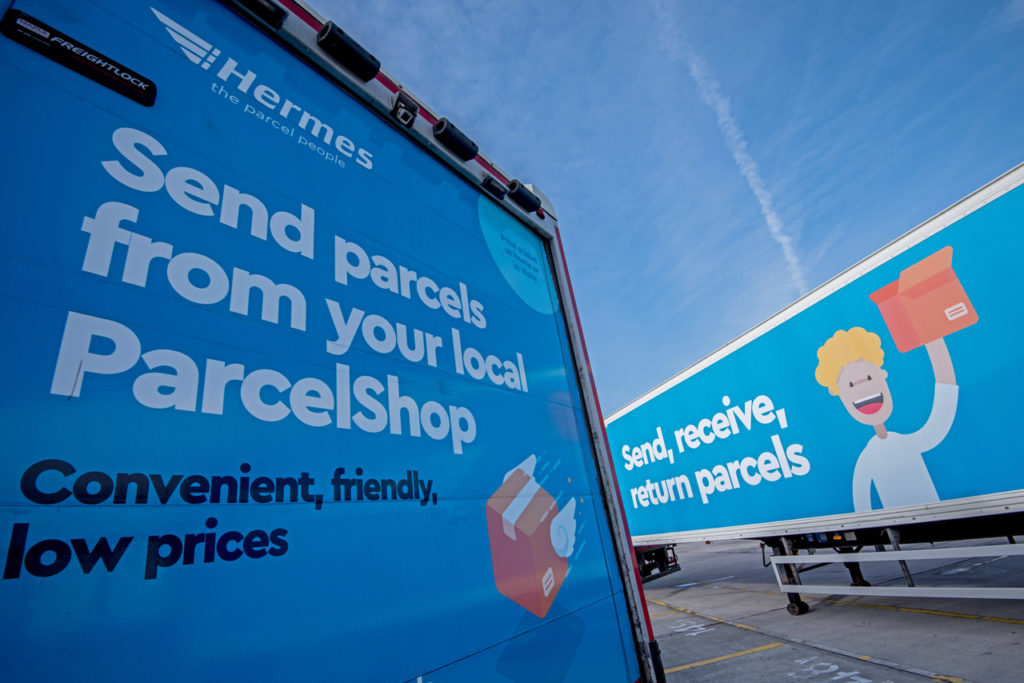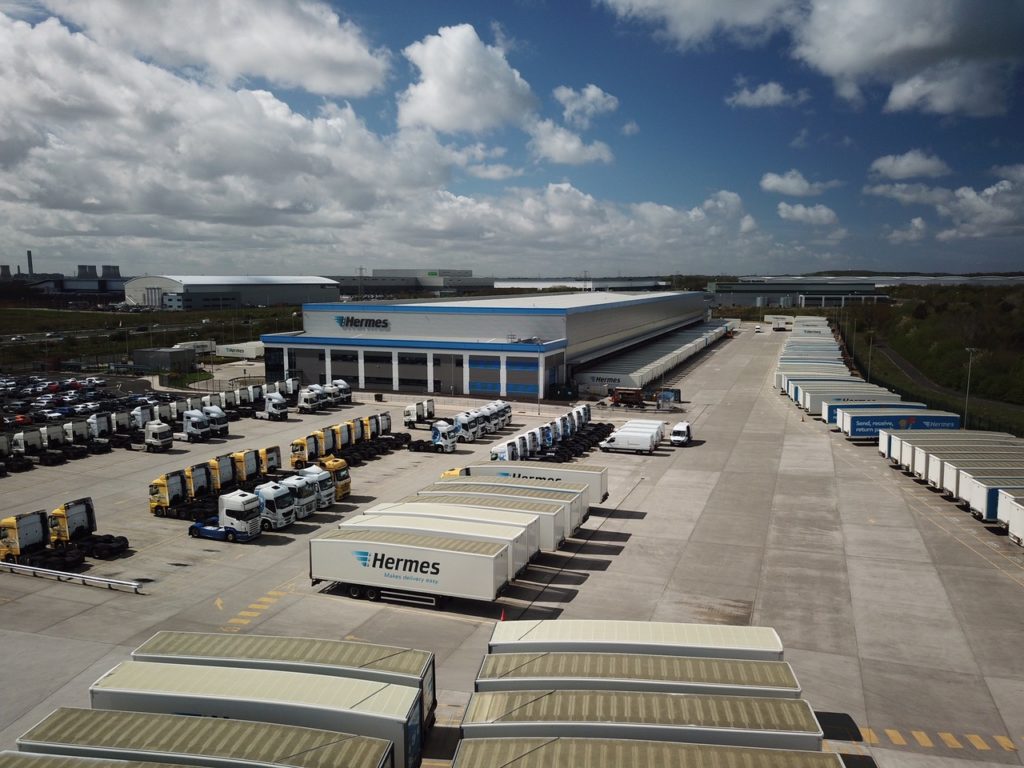Richard Blown, head of innovation at Hermes, talks to Hazel King about how its Digital Futures program is helping the post to achieve its business goals
For over 40 years, Hermes has been a reliable name in postal operations, delivering millions of parcels every year for some of the UK’s leading retailers and e-tailers. However, the boom in e-commerce, which has increased the number of parcels handled by the operator from 190 million in 2014 to 335 million in 2018, has presented a number of challenges for its processes, technology and people.
It was in response to this growth that Hermes devised and launched its £55m (US$70m) Digital Futures program in 2018, aimed at enhancing the customer experience while coping with growing parcel volumes.
“Our overall vision is to be the carrier of choice for every end customer in the UK, and our Digital Futures program continues to play a vital role in helping the business to achieve its goals,” explains Richard Blown, head of innovation at Hermes.
The company announced the next phase of its strategy in March 2019, with Digital Futures+ taking advantage of smart technology, clever use of data, bold innovation and unrivaled industry insight, according to Blown. “Digital Futures+ will deliver a range of industry-leading services that promote increased personalization, greater assurance and a best-in-class returns process,” he adds.
It may sound a bit of a cliché, but Blown says the entire business has played a part in reaching this point: “CEO Martijn de Lange and the rest of the UK board have prioritized the development of Digital Futures and were wholeheartedly committed to approving significant investment in this area. The product development team and everybody working at our dedicated Innovation Lab have worked tirelessly to develop new consumer-facing applications. In addition, marketing provided vital feedback that has helped shape how each product is delivered, while the client teams shared valuable insights from our customers. HR, operations and our couriers have all had their say, too.”
Hermes has set itself the goal of becoming the UK’s carrier of choice by 2021 and has seen double-digit growth across the business for the past six years, meaning investment in IT and technology has become paramount to its future success. “The launch of Digital Futures came at the same time our CIO Chris Ashworth was overseeing the completion of our three-year IT transformation from legacy to digital,” explains Blown. “This initiative re-platformed the business on a cutting-edge, scalable, real-time infrastructure, enabling advances in mobile and web-based products to facilitate an improved customer journey.”

Key initiatives
Hermes has already released a number of new features and products as part of Digital Futures, and the development of Digital Futures+ will see more updates throughout the remainder of 2019.
“Key initiatives that will be rolled out this year include the ability to divert a parcel to a ParcelShop, a locker or another address right up to the time of delivery, in addition to the current options of a safe place or neighbor; the introduction of instant real-time notifications about issues such as traffic delays and address queries; as well as trials for in-car delivery,” Blown comments.
“Meanwhile a new ‘My Place’ service will enable customers to upload a photo of where they want their parcel delivered to and geo-pin it to a map – particularly useful for hard-to-locate, large rural properties and those with multiple uses and access.”
Hermes is also developing a returns solution that aims to offer the widest range of convenient and easily accessible options, including collection by courier or return to a ParcelShop or locker. “Our retail clients will soon have the option of not including a returns label in the parcel, but instead the end consumer will easily be able to generate a QR code that can be used to quickly print one at home or at a ParcelShop,” Blown continues.
Further initiatives include making monitoring stock levels and processing refunds easier and quicker by allowing customers to log online which specific items they are returning.
Single experience
As part of its IT transformation, Hermes launched a single website for its Hermes Send shippers, clients and end-recipients in July 2018 alongside an accompanying app. “We created a single-branded digital experience spanning existing platforms without duplicating workflows and rewriting back-end services,” Blown explains. “Previously there were two brands, Hermes and Hermes Send (previously myHermes), and as part of the digital transformation we decided to create a streamlined digital-brand called ‘Hermes: the parcel people’.”
The website is built on a SaaS web content management solution designed with tools for complex digital needs and an enterprise cloud communications platform, transforming the delivery experience through real-time communications. The architecture is also scaleable and future-proof to cope with growth peaks in volumes. The improved functionality and usability of the website have led to a considerable reduction in calls to the Hermes customer service team, according to Blown.
“We wanted to automate customer service and offer consumers greater control by using AI to create a faster experience and to future-proof business, while allowing the customer service team to focus on other areas,” he says. “For example, our chatbot Holly is available 24/7 and provides tracking information within one minute, including SafePlace Photo, signature and geo-pin to confirm the parcel’s delivery location. Customers simply provide their parcel number, email or address to self-serve.
“Holly is continually evolving to develop her brand personality. The next phase of Holly’s development will feature the ability to change delivery preferences to leave a parcel with a neighbor or designate safe places. Expected delivery dates will also be included in a future release, enabling customers to have instant confirmation of the date. It is very exciting to see this solution grow.”
According to Blown, Holly now receives 100% of all enquiries and and 41% of customers can now solve issues through Holly, resulting in a cost saving of around £1m (US$1.27m). “We have also seen a significant shift in reasons for contact,” he says. “For instance, delivery disputes have dropped due to Holly’s use of SafePlace photos and signatures. Data from November 2018 to March 2019 shows that out of 342,540 total chats, bot-to-agent chats numbered 200,477 with bot-only chats at 142,063.”

Delivery developments
As parcel volumes continue to rise along with customer expectations for quicker, easier delivery, Hermes is now offering a two-hour ETA notification to customers on the day of delivery and is using an enterprise cloud communications platform from IMImobile to allow it to send real-time personalized communications via email, SMS, or push notifications if users download the new Hermes App.
The postal operator is also looking at developing an in-car delivery service, although Blown says he can’t disclose too much at the moment. “We are exploring how we can replicate the success of in-car deliveries recently seen across Scandinavia and Germany,” he says. “We are in discussions with several car manufacturers and hope to share more details later this year. This venture further illustrates our commitment to innovation as we look to shape the future of parcel delivery, providing consumers with increased choice and assurance.”
Returns is also a focus for Hermes, especially with the rise in customers buying multiple items with the intention of returning those that aren’t suitable. “As a result, returns volumes have grown dramatically over recent years and the process is now considered to be an integral part of the purchasing process,” says Blown.
Technology investments
During its IT transformation project, Hermes has replaced its legacy systems with an AWS Cloud Hosted Infrastructure, offering scalability at peak periods which have seen 1.9 million parcels through the company’s network in a single day.
Blown explains, “One of our technology foundations is building an API first. This allows seamless connection and integration with our clients, reducing the time it takes for the client to start using the system. This also provides a platform for rapid innovation. The same APIs behind the website and mobile app have been used to provide Digital Futures products and services on voice assistants such as Amazon Alexa and Google Assistant, and our chatbot Holly.”
As Hermes’ digital transformation continues, Blown’s team is busy finalizing and testing the remaining features and products of the Digital Futures+ portfolio, which will be rolled out over the coming months. “This will take us into the next peak season, when we anticipate even higher volumes across our network,” he concludes.


